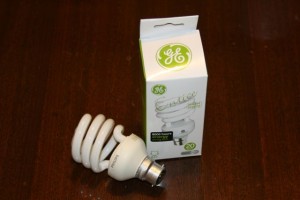 How do you know how efficient a light bulb is? Well soon we’ll be able to use the a similar system that’s available for comparing fridges, dishwashers, heat pumps and various other appliances.
How do you know how efficient a light bulb is? Well soon we’ll be able to use the a similar system that’s available for comparing fridges, dishwashers, heat pumps and various other appliances.
It’s called Minimum Energy Performance Standards, or MEPS for short. You can find out more about MEPS on the EECA website.
From the October 1st 2012, MEPS will apply to all compact fluorescent light bulbs (CFLs) sold in New Zealand.
What Does New MEPS for CFLS Mean for Consumers?
It’s all in the name really. MEPS sets a minimum benchmark for efficiency. That is, the product has to achieve a certain level of efficiency for it to make the cut. All bulbs imported into New Zealand from October 1st, will need to comply. (Companies will be able to continue to sell old stock.)
Part of the MEPS requirements are for packing information. So consumers should be able to compare:
- Light quality and output
- Power usage
- Efficacy
- Expected life
Efficiency or Efficacy?
Strictly speaking, efficacy is the correct term for how good a light bulb is. This is basically the amount of useful light (for humans) produced for a given amount of energy. It can be expressed as lumens per Watt (lm/W) and this is how lights are compared in the MEPS database.
CFLS range in efficacy from about 45-75 lm/W. Incandescent bulbs can be as low as 12 lm/W for a 40 W bulb or 17 for a 100 W bulb.
LEDs have a huge range of efficacy values but decent LEDs should be upwards of 60-75 lm/W. (The huge range available for LEDs is another post altogether.)
What is Light Bulb Temperature?
The temperature of a light bulb is usually describing the colour produced, not how hot the bulb is. Confusing?
Well, it comes from the temperature in Kelvin that produces different colours in the visible spectrum. The lower the temperature the warmer (more red-orange) the light is. The higher the temperature, the more blue or ‘cooler’ the light is. ABLamp has a nice colour chart here.
Candle light or campfire light is down the low end at around 1,000 K. Our caveman eyes tend to like that sort of thing, especially at night.
‘Warm white’ bulbs are often sold to try to simulate incandescent bulbs. These tend to be about 2,700 – 3,000 K.
Anything around 3,500 – 4,000 K is ‘cool white’. This is the harsher bright white of fluorescent tubes that keep us awake and alert all day in the office.
Natural daylight is around 6,000 K.
Lighting References
- For all you could ever want to know about luminous efficacy, it’s hard to go past Wikipedia.
- Kelvin colour chart: http://www.ablamp.com/Colour_Temperature_Chart.html
Leave a Reply